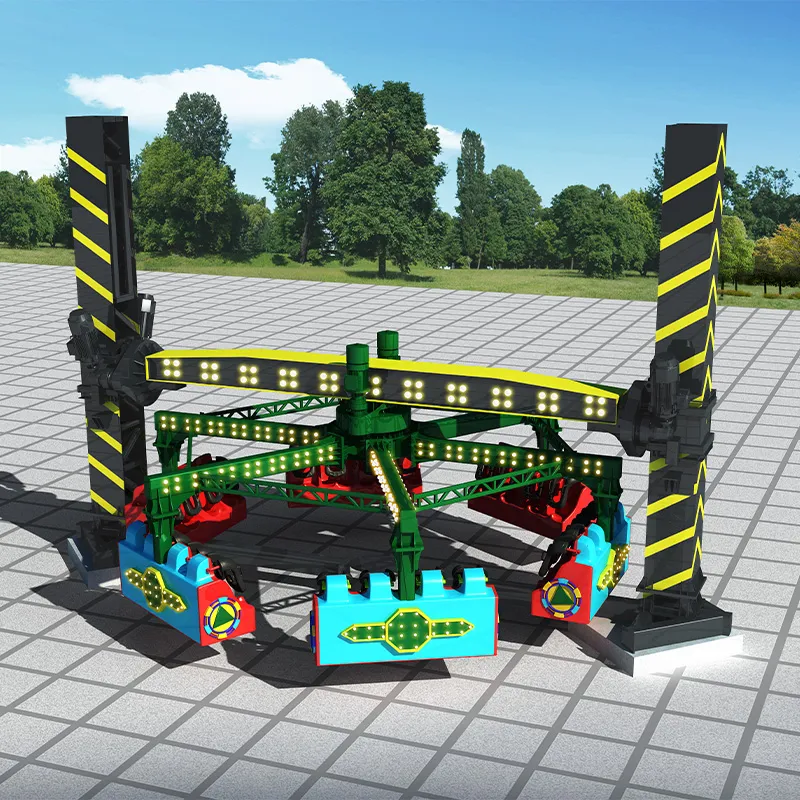- Albanian
- Arabic
- Belarusian
- Bengali
- Czech
- English
- French
- German
- Hebrew
- Hungarian
- Indonesian
- irish
- Italian
- Japanese
- kazakh
- Persian
- Russian
- Thai
- Uzbek
- Vietnamese
Ball Roller Coaster Adventure for Thrilling Fun and Exciting Physics Exploration
The Physics and Thrill of the Ball Roller Coaster
When we imagine amusement parks, one of the first images that comes to mind is the iconic roller coaster. These towering structures with their dizzying loops, steep drops, and exhilarating speed are a staple of the amusement experience. But have you ever considered how a simple ball roller coaster can serve as both a thrilling attraction and a practical demonstration of the principles of physics? In this article, we will explore the mechanics behind a ball roller coaster and how it captivates not only the thrill-seekers but also the curious minds eager to understand the science behind the fun.
A ball roller coaster is typically a miniature version of the full-scale rides found at theme parks. It is designed to allow a small ball to travel along a track that includes hills, curves, and sometimes even loops. The excitement of watching a small ball race down the slopes and navigate tight corners can be a source of entertainment for enthusiasts of all ages. But beyond the enjoyment lies an intricate dance of physics.
At the heart of any roller coaster, including the ball variant, are the principles of potential energy and kinetic energy. When the ball is lifted to the highest point on the track, it possesses potential energy. This energy is a result of its position above the ground, and it has the potential to be converted into kinetic energy, the energy of motion, as it rolls downward. As the ball begins its descent, gravity pulls it down, and the potential energy is transformed into kinetic energy. This transformation is what gives the ball its speed.
As it races down the initial drop, the ball reaches its maximum speed at the lowest point of the track. According to the law of conservation of energy, the total energy in a closed system remains constant. This means that the sum of potential and kinetic energy throughout the entire journey of the ball must remain unchanged, assuming negligible friction. Consequently, if the ball ascends a subsequent hill, the kinetic energy will be converted back into potential energy until it reaches a new high point. This cycle continues as the ball navigates through the twists and turns of the track.
ball roller coaster

Friction is a crucial factor in these systems, even for a seemingly simple ball roller coaster
. Each turn and rise creates resistance that gradually dissipates some of the ball's energy. This is why many designs incorporate smooth, curved tracks—minimizing friction allows for faster speeds and longer rides. Some enthusiasts even experiment with materials and track shapes to optimize the ball's journey, creating a thrilling experience while demonstrating valuable engineering concepts.The thrill of a ball roller coaster is also enhanced by the design of the track itself. By varying the height, angle, and shape of the course, designers can produce a wide array of sensations—from the stomach-dropping experience of a steep drop to the dizzying rush of a tight curve. Each element of the design plays an integral role in shaping the ride's overall excitement. The carefully calculated changes in elevation and the interplay of speed create moments of weightlessness and increased G-forces, which add to the thrill.
In addition to their entertainment value, ball roller coasters serve as an excellent educational tool. They can be found in classrooms, museums, and science fairs, where they provide hands-on learning opportunities for students. By building their own ball coasters, learners can explore the principles of physics in a practical and engaging manner. They can test variables like track height, slope, and friction to see firsthand how these factors affect the speed and distance the ball travels.
In conclusion, the simple yet fascinating ball roller coaster encapsulates the essence of physics in a way that is both educational and exhilarating. Combining elements of design, engineering, and scientific principles, these miniature rides provide an opportunity to experience and understand fundamental concepts of energy and motion. Whether enjoyed for their thrill or used as a learning tool, ball roller coasters remind us that sometimes, the most entertaining experiences can also be the most enlightening. So the next time you watch a ball race down a track, remember the incredible science at play behind the scenes.
-
Flume Ride-Hebei Zhipao Amusement Equipment Manufacturing Co., Ltd.|Thrilling Water Attraction&Customizable DesignJul.30,2025
-
Flume Ride - Hebei Zhipao Amusement Equipment | Water Coaster, Thrilling DescentJul.30,2025
-
Flume Ride - Hebei Zhipao | Thrilling Water AttractionJul.30,2025
-
Flume Ride: Thrilling Water Attraction by Hebei Zhipao|Log Flume Manufacturers&Flume Ride DesignJul.30,2025
-
Flume Ride-Hebei Zhipao Amusement Equipment Manufacturing Co., Ltd.|Thrilling Water Coaster, Safe DesignJul.30,2025
-
Flume Ride-Hebei Zhipao Amusement Equipment Manufacturing Co., Ltd.|Thrilling Water Attraction, Safe DesignJul.30,2025
